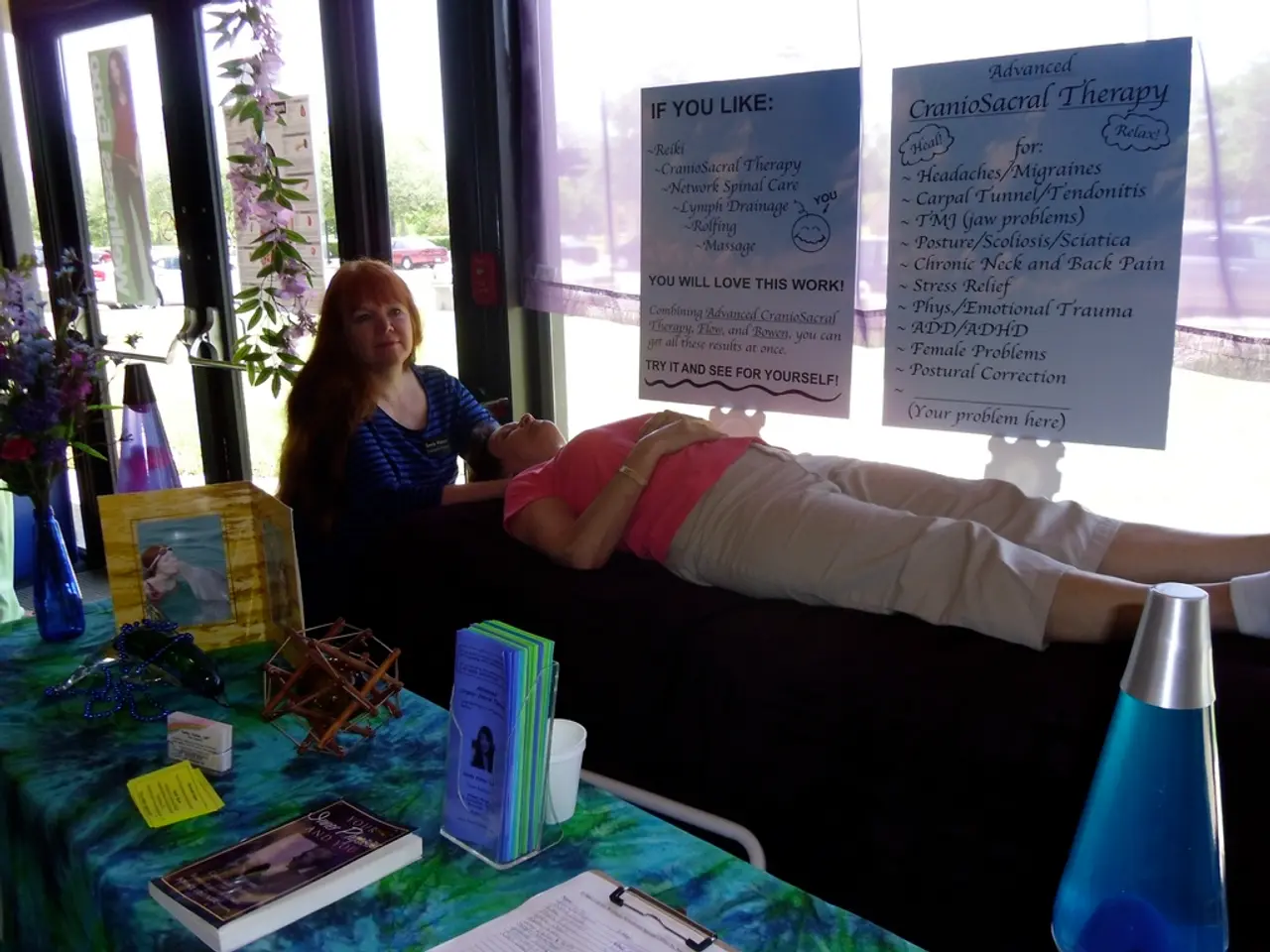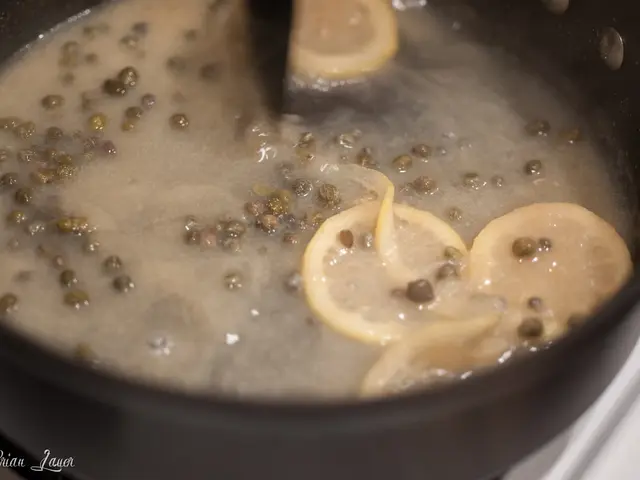Natural Remedies for Premenstrual Dysphoric Disorder: Exploring 12 Different Approaches
Premenstrual Dysphoric Disorder (PMDD) is a debilitating condition affecting between 3 and 8 percent of women of reproductive age, with the actual number potentially being higher due to misdiagnosis. Characterised by intense irritability, anxiety, and fatigue, PMDD can make daily life challenging for those affected. However, recent studies have uncovered a range of natural treatments that may provide relief.
One such treatment is calcium supplementation, which has shown promise in reducing various symptoms related to premenstrual syndrome (PMS), a condition sharing features with PMDD. Chasteberry (Vitex agnus-castus) may also aid in alleviating irritability and breast tenderness associated with PMS/PMDD, although further studies are needed to fully confirm its effectiveness.
Adaptogenic functional mushrooms, such as Reishi and Cordyceps, are being investigated for their potential to support hormonal balance, stress buffering, and nervous system regulation. These mushrooms' adaptogenic and anti-inflammatory effects are thought to contribute to mood stabilization and fatigue reduction during luteal phases when PMDD symptoms peak.
Lion’s Mane mushroom has shown potential for supporting brain health, mood regulation, and cognitive function, potentially providing antidepressant-like effects that could benefit women with PMDD. Isoallopregnanolone, a neurosteroid, has been tested in randomised, placebo-controlled trials with significant reduction of negative mood symptoms during the luteal phase in women with PMDD, with no severe side effects reported.
Dietary modifications also appear helpful. Eating a healthy, whole-food diet, especially the week before menstruation, may reduce symptoms. Avoiding high-histamine foods can be beneficial for women with histamine intolerance-related PMS symptoms. Intermittent fasting or time-restricted eating, especially extending overnight fasting, may help modulate cortisol levels during the luteal phase, potentially improving mood symptoms.
Warm baths, yoga classes, meditation, regular exercise, and good sleep hygiene practices can also help alleviate PMDD symptoms. Experimenting with different menstrual products, such as organic cotton pads and pantyliners or menstrual cups, may be beneficial for some individuals. However, it's worth noting that some menstrual products can worsen PMDD symptoms in some people, with tampons causing more cramping and lower abdominal pain, and scented pads and pantyliners potentially irritating those with sensitive skin.
While these natural treatments offer hope, it's important to remember that they may not work for everyone. Medical treatments may be necessary if premenstrual symptoms impact mental wellbeing, work, or relationships. Cognitive behavioral therapy (CBT) can help people with PMDD better cope with mood changes, anxiety, depression, and pain.
In conclusion, a combination of lifestyle changes, natural remedies, and medications can help manage PMDD. While promising, some treatments require further research for full clinical validation. It's always advisable to consult with a healthcare provider before starting any new treatment regimen.
[1] https://www.ncbi.nlm.nih.gov/pmc/articles/PMC5864304/ [2] https://www.ncbi.nlm.nih.gov/pmc/articles/PMC7295278/ [3] https://www.ncbi.nlm.nih.gov/pmc/articles/PMC6512772/
- A study suggests that a predictive factor for PMDD could be a family history of bipolar disorder or depression, highlighting a potential genetic link.
- Some experts believe that migraines and PMDD share a common pathophysiology, with fluctuating hormone levels causing similar neurological changes in the brain.
- In a small study, aromatherapy with lavender oil showed promising results for reducing anxiety and improving sleep quality in women with PMDD.
- Multiple sclerosis (MS) and premenstrual dysphoric disorder (PMDD) share a unique connection: over 20% of women diagnosed with MS experience worsening symptoms around their menstrual cycle.
- Recent research reveals that the use of yoga and other mind-body practices like meditation may help alleviate symptoms of PMDD by reducing stress, promoting relaxation, and improving mood.
- St. John's Wort, a popular supplement in health-and-wellness stores, is sometimes used to treat depression, but its effectiveness in managing PMDD symptoms remains inconclusive.
- A study on the effects of CBD oil in women with PMDD found improvements in anxiety, sleep quality, and overall mood, providing potential evidence for its use as a natural supplement.
- Nutritionists recommend incorporating foods rich in omega-3 fatty acids, magnesium, and vitamin B6, as they may help alleviate PMDD symptoms such as mood swings, bloating, and breast tenderness.
- Women with multiple sclerosis or a history of migraines should consult with their healthcare provider before pursuing fitness-and-exercise or therapies-and-treatments for PMDD, as their condition may require an individualized approach.







